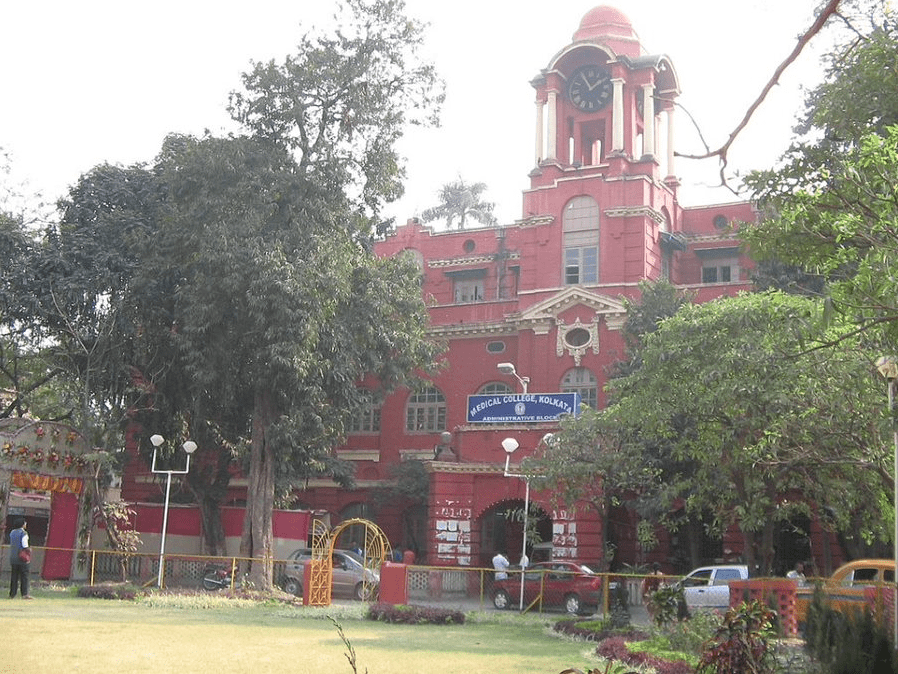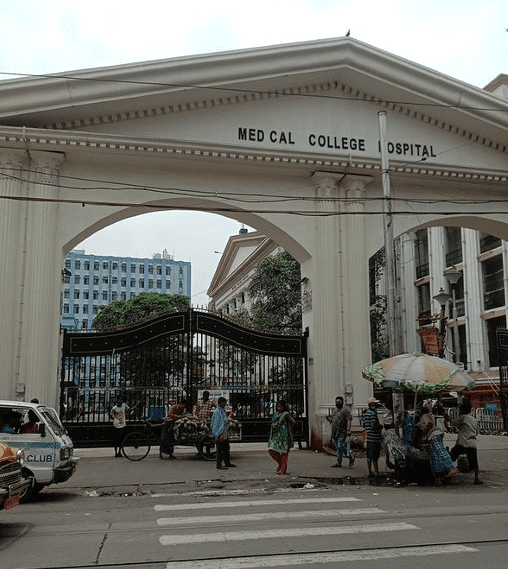Arpan K. Banerjee
Solihull, United Kingdom

15 August 2022 marked the 75th anniversary of Indian independence from British rule. Since independence, the Indian medical diaspora has successfully settled in countries around the world and contributed greatly to their health care systems. Outside India, few are familiar with the history of modern Indian medicine. India was long famous for its Ayurvedic system of medical practice, still influential amongst some of the population and available in many parts of the country. Modern hospitals providing Western medicine, however, started in the nineteenth century.
The oldest medical training establishment in India, the École de Medicine de Pondicherry, was set up in 1823 by the French. It was one of the first medical schools of Western medicine in Asia and had a particular expertise in tropical medicine, as well as having medical and surgical departments. The instructors were French naval staff, and students were granted diplomas that enabled them to practice in the French colonies. In 1956, the Indian government took over the college, and for a short time it was known as Dhanvantri Medical College. The college was moved to the outskirts of town and renamed after the first prime minister of India, Jawaharlal Nehru, on 13 July 1964 by the president of India, Dr. Sarvepalli Radhakrishnan.

The second oldest medical school in India was the Medical College of Calcutta, also known as Kolkata Medical College, established on 28 January 1835 during the era of the British Raj by Lord William Bentinck, the first governor general of India. Bentinck was also involved in introducing English as the language of instruction in India. Calcutta, in the eastern part of India, was the capital city under the British Raj from 1773–1911. Students were admitted to this public institution regardless of caste or creed. Instruction was provided in Western medicine in the Medical College Hospital, one of the largest hospitals in West Bengal. The curriculum was based on those of the teaching hospitals and medical schools in the UK. The first principal was Mountford Joseph Bramley, an assistant surgeon in the East India Company who was interested in diseases of the thyroid and who sadly died young, aged only 34. Famous alumni of the medical school included Bidhan Chandra Roy, who became the chief minister of Bengal from 1948–1962; Pasupati Bose, a revered professor of anatomy; Ram Yadav, the first president of Nepal; and Kamaleshwar Mukherjee, an acclaimed actor, writer, and director of Bengali films. Sir Upendranath Brahmachari, twice nominated for the Nobel Prize in Medicine, was also an alumnus and was famous for synthesizing carbostibamide in 1922 to treat visceral leishmaniasis.

The year 1835 also saw Madras Medical College in southern India admit medical students for the first time. Sir Frederick Adams, the governor of Madras, opened the school on 2 February 1835. Interestingly, a government hospital for treating soldiers from the East India Company had existed from 1664 at Fort St. George, but medical instruction began in 1835 at the general hospital. In 1875, Mary Ann Dacomb Scharlieb was one of the first women in the world to be admitted to medical school, a fact the Madras Medical College is particularly proud of. Scharlieb’s husband was a British lawyer in Madras. She went on to help establish the Royal Victoria Hospital for Caste and Gosha Women in Madras, now called the Government Kasturba Gandhi Hospital for Women and Children. “Gosha” was a term used to describe women in a social state of isolation, or purdah. She was also the first woman to be awarded the postgraduate medical qualification MD from the University of London in 1888.
Medical school numbers expanded during the nineteenth century and continued after independence. India now has over 500 medical schools.
References
- “Medical College and Hospital, Kolkata.” Wikipedia. https://en.wikipedia.org/wiki/Medical_College_and_Hospital,_Kolkata.
- “Jawaharlal Institute of Postgraduate Medicine and Research.” Wikipedia. https://en.wikipedia.org/wiki/Jawaharlal_Institute_of_Postgraduate_Medical_Education_and_Research.
- “Madras Medical College.” Wikipedia. https://en.wikipedia.org/wiki/Madras_Medical_College.
DR. ARPAN K. BANERJEE qualified in medicine at St Thomas’s Hospital Medical School, London. He was a consultant radiologist in Birmingham 1995–2019. He was President of the radiology section of the RSM 2005–2007 and on the scientific committee of the Royal College of Radiologists 2012–2016. He was Chairman of the British Society for the History of Radiology 2012–2017. He is Chairman of ISHRAD. He is author/co-author of papers on a variety of clinical, radiological, and medical historical topics and seven books, including Classic Papers in Modern Diagnostic Radiology (2005) and The History of Radiology (OUP 2013).
Highlighted in Frontispiece Volume 15, Issue 1 – Winter 2023 and Volume 15, Issue 2 – Spring 2023

Leave a Reply